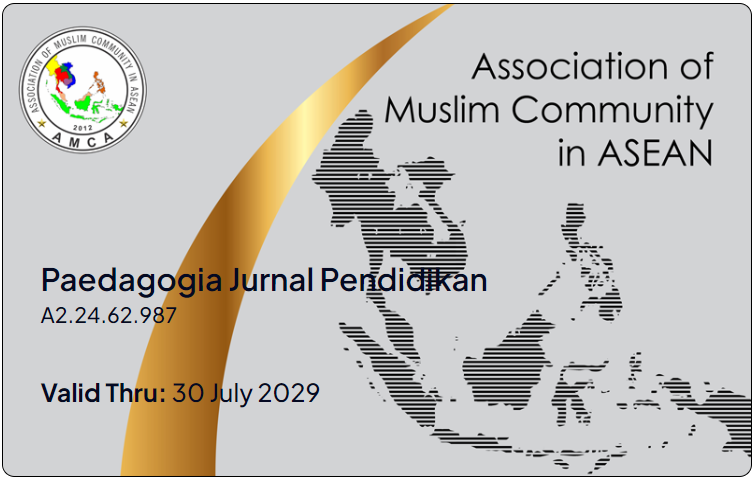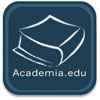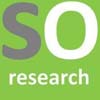Critical Examination of the School Environment in Terms of Augmenting Motivation Among Students in Junior High Schools in Palu
Abstract
This study aims to determine whether there is an influence of the school environment on the learning motivation of students at Negeri 9 Palu. The research method used in this study is quantitative. The instrument in this study uses a questionnaire. The research data that has been collected is analyzed with the help of a computer program using statistical product and service solution (SPSS), and the results of the hypothesis test are analyzed using a simple linear regression test. The results of the study show a calculated t value of 7.727> t table 1.986. With a significant value of 0.001 < 0.005. The results of this study can also be seen in the coefficient of determination that the contribution of the influence of the variable (X), namely the school environment, to the variable (Y), namely learning motivation, is 41%. The conclusion of the results of this study shows that there is a significant influence of the school environment on the learning motivation of students in the subject of Islamic Religious Education at SMP Negeri 9 Palu. This finding emphasizes the importance of a supportive and engaging school environment in fostering students' motivation to learn, particularly in subjects like Islamic Religious Education. Future research could explore additional factors that may further enhance learning motivation in this context.
Downloads
References
Br Munthe, Anisah Putri, Dianny Rachma Khairiah, Dhevy Kartika Ayu Angkat, and Muhammad Rijal Hasan Harahap. “Pengaruh Lingkungan Terhadap Motivasi Belajar Siswa.” Algebra : Jurnal Pendidikan, Sosial Dan Sains 3, no. 2 (2023): 83–88. https://doi.org/10.58432/algebra.v3i2.752.
Hapudin, Muhammad Soleh. Teori Belajar Dan Pembelajaran Menciptakan Pembelajaran Yang Kreatif Dan Efektif. Cetakan sa. Jakarta: KENCANA, 2021.
Harjali. Penataan Lingkungan Belajar Strategi Untuk Guru Dan Sekolah. Malang-Jawa Timur: CV. Seribu Bintang, 2019.
Herawati dkk. Motivasi Dalam Pendidikan (Konsep Teori Dan Aplikasi). Edisi pert. malang: PT.Literasi Nusantara Abadi Grup, 2023.
Humas. “Buka Kongres XXIII PGRI, Presiden Tegaskan Pentingnya Lingkungan Sekolah Yang Aman.” humas, 2024. https://doi.org/https://setkab.go.id/buka-kongres-xxiii-pgri-presiden-tegaskan-pentingnya-lingkungan-sekolah-yang-aman/.
Ikhsan, Muhammad, and Ishak Syairozi. “Terhadap Akhlak Peserta Didik Di Smp Negeri 194 Jakarta” 7 (2024): 10722–25. https://doi.org/https://journal.universitaspahlawan.ac.id/index.php/jrpp/article/view/31922/21450.
Kompri. Motivasi Pembelajaran Persepktif Guru Dan Siswa. Cet Pertam. Bandung: PT Remaja Rosdakarya, 2015.
Muhammad Nurdin, Hamzah B. Uno. Belajar Dengan Pendekatan PAILKEM : Pembelajaran Aktif, Inovatif, Lingkungan, Kreatif, Efektif, Menarik. Cet.II. Jakarta: Bumi Aksara, 2012.
Muri, Yusuf. Metode Penelitian Kuantitatif, Kuantitatif Dan Gabungan. Cet. I. Kencana, 2014.
Putri, Afrida Nesya, and Nastiti Mufidah. “Pengaruh Lingkungan Keluarga Dan Lingkungan Sekolah Terhadap Kedisiplinan Siswa.” ASANKA: Journal of Social Science And Education 2, no. 1 (2021): 133–48. https://doi.org/10.21154/asanka.v2i1.3031.
Sihite, Yunita, Lisbet Novianti Sihombing, and Desi Sirjabat. “Pengaruh Lingkungan Sekolah Terhadap Motivasi Belajar Siswa Kelas V SD Negeri Percontohan.” Journal on Education 06, no. 01 (2021): 2905–14. http://dx.doi.org/10.31219/osf.io/tcyq6.
Sugiyono. Metode Penelitian Kuantitatif. Cet II. Bandung: Alfabeta, 2019.
———. Statistik Dalam Penelitian. Cer. XXXI. Bandung: Alfabeta, 2021.
———. Statistik Untuk Penelitian. Cet. XII. Jawa Barat: Alfabeta, 2007.
Wahid, Farhan Saefudin, Didik Tri Setiyoko, Slamet Bambang Riono, and Agung Aji Saputra. “Pengaruh Lingkungan Keluarga Dan Sekolah.” Syntax Literate : Jurnal Ilmiah Indonesia 5, no. 8 (2020): 555–64.
Zanita, Erlina. “Pengaruh Lingkungan Belajar Sekolah Dan Motivasi Belajar Terhadap Kemandirian Belajar Pendidikan Agama Islam Siswa SD Negeri 14 Bengkulu Selatan.” Jurnal Al-Bahtsu 3, no. 1 (2018): 0–10. https://doi.org/https://ejournal.uinfasbengkulu.ac.id/index.php/albahtsu/article/view/1300.
Copyright (c) 2025 Paedagogia: Jurnal Pendidikan

This work is licensed under a Creative Commons Attribution-NonCommercial 4.0 International License.
The author agrees to the following conditions upon publishing a work to Paedagogia: Jurnal Pendidikan:
1. Each article is licensed under a Creative Commons Attribution-NonCommercial 4.0 International License. The author(s) recognizes that Paedagogia: Jurnal Pendidikan has the right to be the first to publish under a Creative Commons Attribution-NonCommercial 4.0 International License. This license permits the copying and redistribution of this material in any form or format, as well as the composition, modification, and creation of derivative works of this material for any purpose, but Non commercial, as long as the author is credited with the original work.
2. Authors may submit articles separately or arrange for non-exclusive distribution of manuscripts previously published in this journal in other forms (e.g., to the author's institutional repository, publication in books, etc. ), provided that the manuscript is acknowledged as having been published first in the Paedagogia: Jurnal Pendidikan.
3. A copyright submission agreement must attach each approved manuscript prior to publication. You may obtain the form for the copyright submission agreement here (INA) (EN).

































 This work is licensed under a
This work is licensed under a 